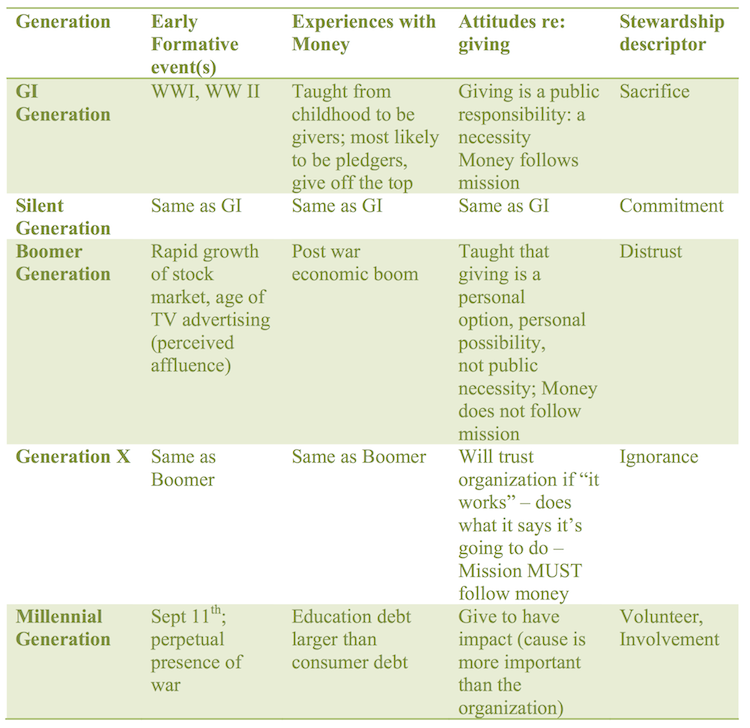Little Green Light is a cloud-based donor management system for fundraisers.
Subscribe to get our latest product updates, best practices and tips to grow your nonprofit.
What is Generations Theory?
Basically, it’s the supposition that four types of generation in the United States have come into being in the past hundred years, each with a level of familiarity among its members as a result of having experienced the same formative events at similar developmental stages. The four types are:
How do the current living generations fit into this theory?

*Neil Howe and Bill Strauss, Generations: The History of America’s Future, 1584 to 2069. Quill: New York, 1991, and http://www.lifecourse.com/.
What events define each generation, and how does that impact their experiences with money or attitudes toward giving?

What does this mean for your cultivation and stewardship efforts?
When developing your outreach/solicitation plan, target your message and design the donor experience to be generationally specific. Consider segmenting your letters by generation, and create personalized letter content that is applicable to each. Use keywords that will resonate with each of the generations: thanking your GI generation for their “sacrifice” and the Silent Generation for their “commitment,” or asking your Millennials to get “involved” by volunteering.
Be sure to use communication strategies that are in line with each generation’s comfort level. It’s fine to use letters and pledge drives with those in the GI and Silent Generations, but don’t expect that same strategy to work with your Millennials.* You’ll need to connect with them through technology, and consider trying some peer-to-peer fundraising options—Millennials are happy to help spread the word about your cause to their friends!
How can I use Generations Theory with the data in my donor database?
The key to applying Generations Theory to your data is collecting birthdates or birth year data. If you’re working in a school environment, graduation data can also be helpful. For a school with a long history, you may have alumni across all generations.
Once these data points have been captured, analyze your existing constituency. Consider something as simple as clicking on your “Top 100” donors and scanning through the list of names. Next have a look at your “Active” donors and see if you can get a sense of how your constituency breaks out along generational lines.
Do you have significant representation from more than one generation? If yes, then segmenting your data by generation might be worth thinking about. If not, you may be better served focusing on different segmentation strategies, such as past giving or affinity.
*Are you looking for insights on how to connect with younger donors and prospects? Take a look at how generational factors have influenced alumni engagement in this infographic from The Alumni Channel.
Are you using generational stewardship practices at your nonprofit? Please share them with us on our Facebook page at https://www.facebook.com/littlegreenlight.
Ready to try LGL? Get your first 30 days free. No credit card required.